Real • 고유 한 NMN 12000mg 젊음의 분수
Stock: Available
$368.00
Stock: Available
Real House Canada는 캐나다 최초의 제약 R&D 팀으로 인체의 다양한 중요한 노화 방지 요소와 결합된 고유한 NMN 공식을 개발하여 매우 효과적인 Real • Unique NMN 1,2000mg – Youth Fountain 제품을 출시했습니다.우리의 독특한 공식에는 고용량의 NMN과 유효 비율의 NADH가 포함될 뿐만 아니라 활성 성분인 니코틴아미드, 글루타민 및 프테로스틸벤을 추가하여 인간 세포의 기능을 최적화하고 속도를 늦추는 것을 목표로 하는 우수한 제품을 공식화합니다. 인간의 노화 과정.
미토콘드리아는 우리 세포의 에너지 발전기입니다. NMN은 (NAD+) 및 NADH 생합성의 전구체입니다. NAD+와 NADH는 모두 세포 대사 과정에서 산화 환원 반응 시스템의 주요 조효소로, 신체가 정상적으로 활동적으로 기능할 수 있도록 미토콘드리아가 필요로 하는 에너지를 생산합니다. NAD+(니코틴아미드 아데닌 뉴클레오티드)는 모든 살아있는 세포에 존재하는 분자(코엔자임)이며 세포 노화를 조절하고 정상적인 신체 기능을 유지하는 데 필수적입니다. 시간이 지남에 따라 인간과 동물의 NAD+ 수치가 크게 감소합니다. “NAD+는 우리가 젊음의 샘에 가장 가까운 것입니다.”라고 Harvard 의과 대학의 Paul F. Glenn 노화 생물학 센터의 공동 소장인 Dr. David Sinclair는 말합니다. “NAD+는 가장 중요한 분자 중 하나입니다. 생명이 존재하려면 30초 안에 죽는다.” 2017년 3월 Science 저널에 발표된 연구에서 Sinclair 박사와 그의 연구팀은 NAD+ 수준을 증가시키는 것으로 알려진 화합물인 NMN을 쥐 그룹에게 먹인 물에 첨가했습니다. 결과적으로 이 나이 든 쥐의 NAD+ 수준이 크게 증가하여 더 젊어 보이고 행동하며 예상보다 오래 살았습니다.
생산지: 캐나다
크기 : 병 당 60 식물성 캡슐
유효 기간 : 3 년. 제품은 3년 동안 안전하게 사용할 수 있지만 최상의 효과를 위해서는 개봉 후 가능한 빨리 섭취해야 합니다. 일반적으로 우리 고객들은 이 제품을 개봉 후 1~3개월 안에 완성합니다.
권장 복용량 : 성인: 2캡슐, 1일 1회.
권장 용도: 쉽게 NAD+ 수치를 높이고 손상된 DNA를 복구하여 건강한 노화를 촉진하고 세포 활력을 증가시키고 피로를 완화하며 하루를 에너지로 가득 채워줍니다. 또한 뇌 기능을 강화하고 신진대사를 촉진하는 데 도움이 됩니다. 에너지 대사, 조직 형성, 정상적인 성장 및 발달을 돕고 영양소를 대사하는 신체의 능력을 유지합니다. 항산화 물질의 공급원이며 신체 세포에 에너지를 제공합니다. 정신 선명도, 집중력, 기억력을 향상시키는 데 사용됩니다. 에너지 생산에서의 역할 때문에 치매.
영양성분표 (각 식물성 캡슐에 함유)
| 약용 성분 | Potency 힘 |
| NMN (3-(Aminocarbonyl)-1-(5-O-phosphonato-beta-D-ribofuranosyl)pyridinium, Nicotinamide mononucleotide) | 200 mg |
| Nicotinamide (3-Pyridinecarboxamide, Niacinamide) | 50 mg |
| Glutamine (L-Glutamine) | 100mg |
| Pterostilbene (4’-Hydroxy-3,5-dimethoxystilbene) | 50 mg |
| NADH (1,4-Dihydronicotinamide adenine dinucleotide) | 10 mg |
Non-medicinal ingredients: Microcrystalline cellulose, Hypromellose
Major Ingredients and Functions:
NMN (Nicotinamide mononucleotide)
Nicotinamide mononucleotide (NMN) is a derivative of the B-vitamin niacin that dramatically improves health and longevity by serving as a precursor to NAD+, a compound that plays a crucial role in energy production, metabolism, and gene expression in the body. NAD+ acts as a coenzyme and as a substrate for multiple signal reactions, participating in hundreds of reactions in the human cells. When we boost NMN levels in the body, we can enhance the biosynthesis of NAD+ and alleviate symptoms associated with the depletion of this crucial nutrient. In fact, NMN supplementation has been found to improve various parameters of health, including physical endurance and muscle strength, brain health, heart health, body weight, and gene expression.
*ONE OF THE PATHWAYS TO YOUTH FROM NMN
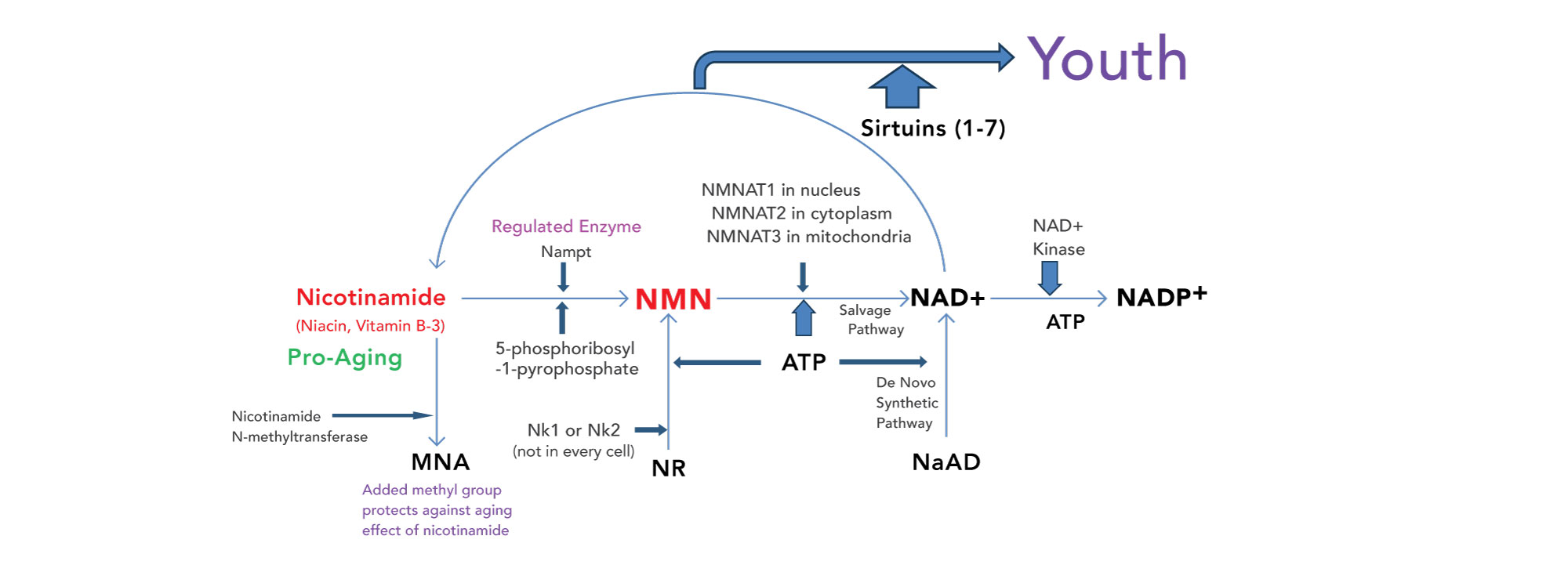
Scientific Researches:
- In 2013, David Sinclair posted on CELL: One week after using NMN to improve NAD, a 22-month-old mouse (equivalent to a 60-year-old human) is significantly different than before with similar levels of mitochondrial, homeostasis, muscle health, and other key indicators as a 6-month-old mouse (equivalent to a 20-year-old human).
- A 2016 study by Professor David Sinclair of Harvard Medical School found that mice equivalent to 70 years of age returned to the 20-year-old stage after taking NMN for a week, and their lifespan was extended by 20%.
- In a journal published in 2016, scientists from the University of Washington School of Medicine pointed out that after the mice ingesting drinking water dissolved with NMN, the concentration of NMN in the blood gradually increased within 10 minutes, and within 30 minutes, NMN entered multiple tissues with blood circulation and synthesized NAD+ in the tissues to increase the body’s NAD+ level.
- Researches on NMN’s improvement of aging indicators has been supported by almost all scientific journals. Studies published on “Nature”, “Science”, “Cell”, and many other journals have confirmed the role of NMN in neurodegenerative diseases (dementia, ALS, and Parkinson’s disease), cardiovascular, hearing, and vision. Three of the researchers of NAD have received Nobel prizes.
- Because of the ability of NMN in repairing DNA damaged by space radiation and restoring skeletal muscle loss under gravity, NASA awarded the leader of NMN research, Professor David Sinclair, twice in 2016 and 2018. Professor David Sinclair himself was awarded the Australian Medal and became one of 50 Health authorities on “Times” in 2018 for his contribution to the anti-aging field.
- Immortality has always been the dream of mankind. According to the “Halflik limit” of telomerase theory, human life expectancy is 120 years old, and the average life expectancy of developed countries in 2018 is 80 years old. NMN is gradually increasing the average life span of human beings by 20%.
Clinical Trials:
- In 2016, Imai Ichiro teamed up with Keio University in Japan to carry out the world’s first clinal trial on NMN, in which 10 40 to 60-year-old healthy male testers ingested different dosages of NMN. The safety of NMN intake and its absorption in the human body is physiologically confirmed through blood tests and more. Imai Ichiro did not disclose the results of the test but said that any possible side effects of NMN on the human body should be carefully observed.
- Keio University conducted a phase II clinical trial of NMN ingestion as early as 2017 after completing the phase I clinical trial; the University of Washington is studying the effects of NMN on glucose metabolism. Metrobio Study’s phase I clinical trial has ended, and the second phase is in progress.

Nicotinamide (3-Pyridinecarboxamide, Niacinamide)
Niacinamide (aka nicotinamide) is derived from niacin. The body has the ability to convert niacin to niacinamide. However, there are some critical differences between these two vitamin B3 components. Niacinamide can also be made by our body from an amino acid known as tryptophan. High niacin doses can cause flushing, which is a condition that causes blood vessels to widen. This makes the capillaries under the skin expand to allow more blood to flow, causing the skin to become red and itchy. Niacinamide does not have the effect of skin flushing, and that is why it is preferred over niacin in the treatment of pellagra. Some niacin is converted to niacinamide, and some niacinamide is converted to a compound called NAD. Directly taking niacinamide helps “shortening” the pathway, hence speeds up the process.
Nicotinamide, a form of vitamin B3, is a critically important part of the structures of NADH and NAD+, where the N-substituted aromatic ring in the oxidized NAD+ form undergoes reduction with hydride attack to form NADH. It is the preferred treatment for pellagra, caused by niacin deficiency. While niacin may be used, nicotinamide has the benefit of not causing skin flushing. Nicotinamide is on the World Health Organization’s List of Essential Medicines, the safest and most effective medicines needed in a health system.
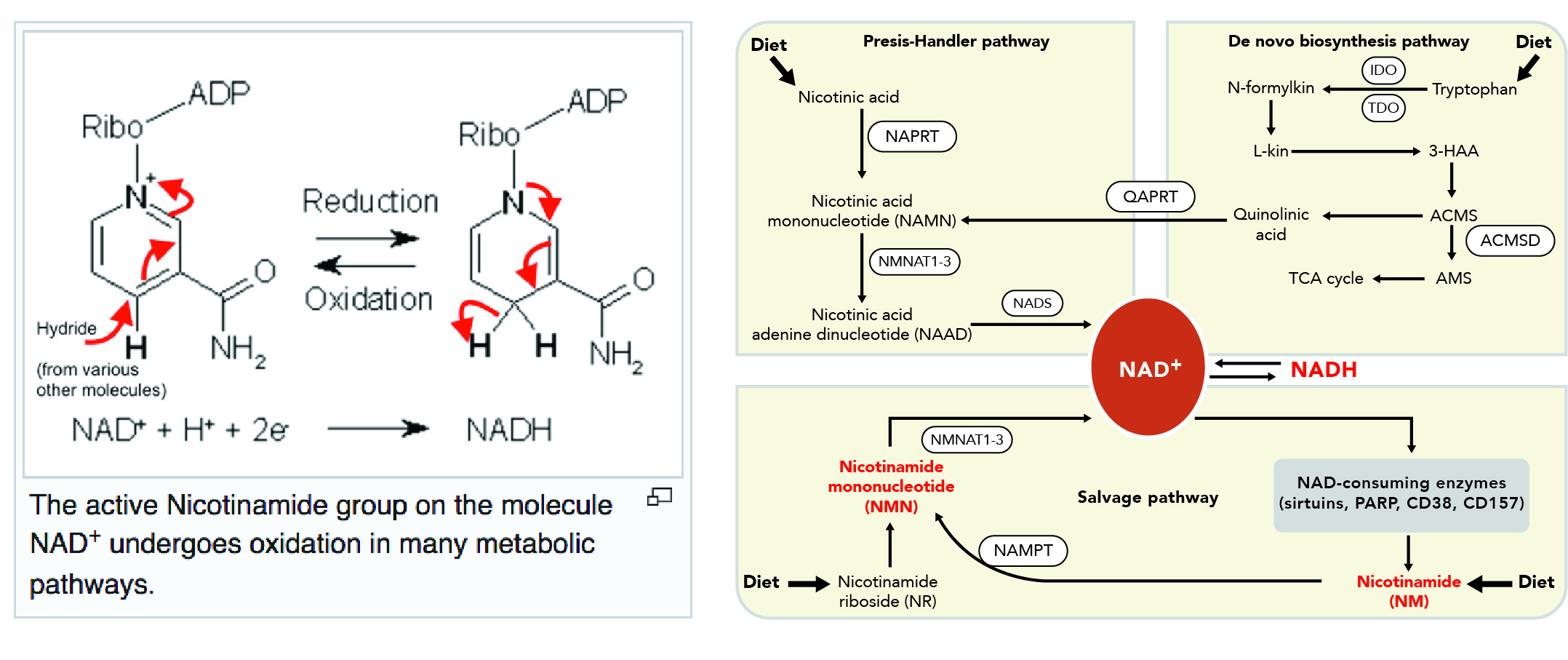
Glutamine (L-Clutamide)
Studies have shown that Glutamine can block Oxidative stress injury induced by Reactive Oxygen Species. The mechanism by which glutamine supports cell proliferation and regulates cell cycle dynamics includes its regulation of DNA and protein biosynthesis rates. Glutamine is routinely added to the cell culture medium, and its importance for cell growth has been determined.
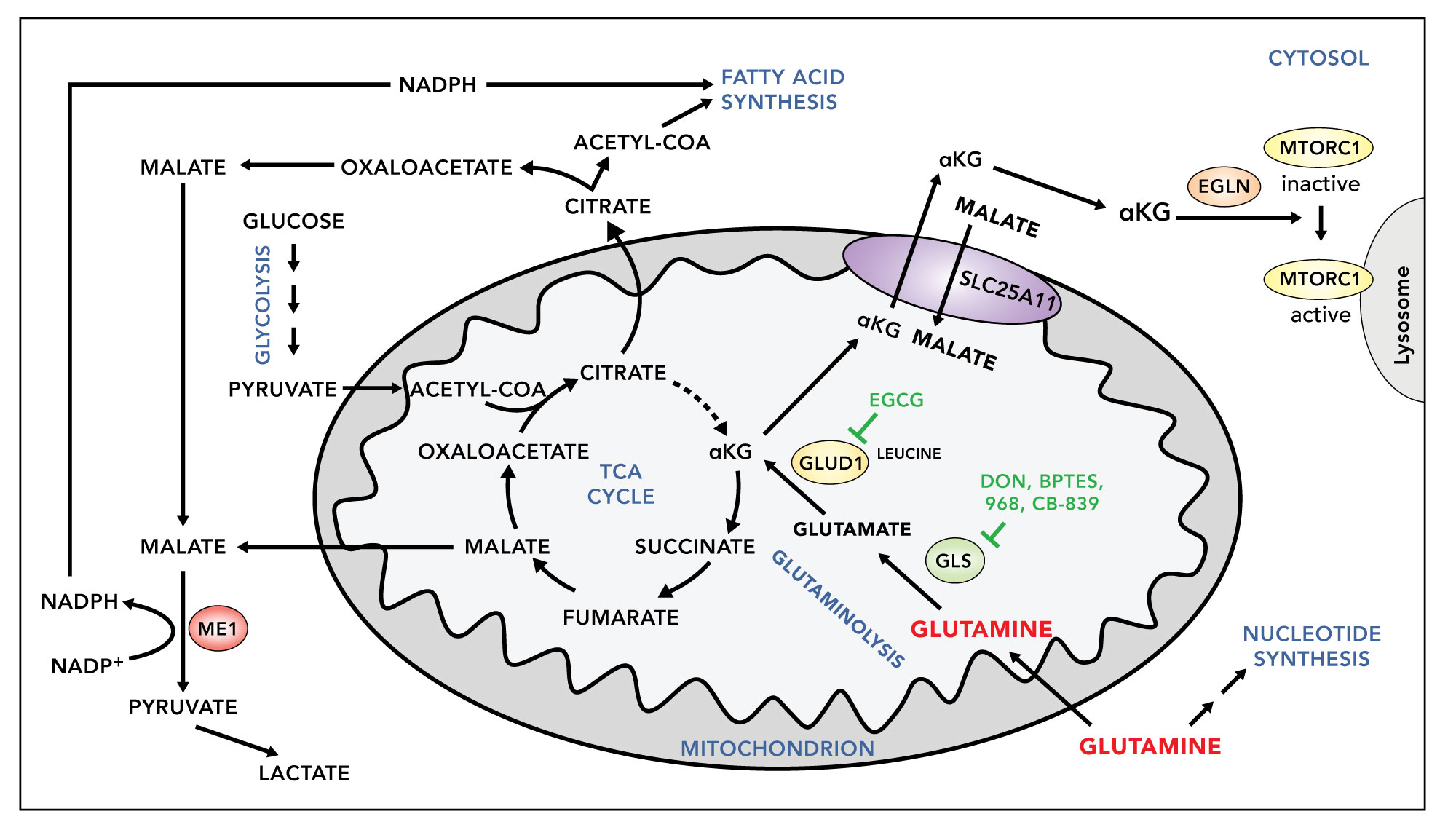
Oxidative stress is characterized by an imbalance between the production and elimination of cellular oxidants, which damage the basic components of cells (including proteins, lipids, and DNA), interfere with homeostasis, and lead to various adverse consequences (Schieber and Chandel, 2014; Wu and Ni, 2015). Reactive oxygen species (ROS), a marker of oxidative stress, is mainly produced in the mitochondrial electron transport chain during cell metabolism and plays important role in cell biological behaviors, such as proliferation and apoptosis (Cameron et al., 2019). Recent studies showed that ROS increases the pyroptosis of VEC that contributes to VEC dysfunction and progression (Wu et al., 2018; Zhaolin et al., 2019). Lowering oxidative stress injury induced by ROS is considered as a promising therapy to inhibit the progression of As (Burtenshaw et al., 2019).
GSH is a major endogenous cellular antioxidant that plays an important role in cellular responses to oxidative stress by neutralizing free radicals and ROS. Glutamine produces GSH and GSSG “buffers” of oxidative stress (Ballatori et al., 2009). Decreasing glutaminase and consequently inhibiting glutamine production can down-regulate this important antioxidant pathway, leading to high ROS levels and toxic effects on cells (Abu et al., 2017). Glutamine starvation has been reported to deplete endogenous levels of the antioxidant GSH, promote oxidative stress in HuH-7 cells, and induce apoptosis (Yang et al., 1998). ECS is highly susceptible to ROS-induced damage because of glutamine consumption (Huang et al., 2017). In addition, glutamine-starved ECs are more sensitive to ROS-induced cell death (Huang et al., 2017). Similarly, glutamine-depleted ECs show a tendency to decrease the overall level of GSH (Huang et al., 2017). Thus, glutamine supplementation reduces mitochondrial ROS formation and apoptosis induced by high glucose and hypoxia re-oxygenation by decreasing oxidative stress and inactivating intrinsic apoptosis pathways. This process is mainly dependent on enhanced GSH synthesis (Li et al., 2015).
Pterostilbene (4′-Hydroxy-3, 5-demethoxystilbene)
Animal studies have found that Pterostilbene, as a strong antioxidant, is absorbed by human blood four times higher than resveratrol. Its utilization rate of biological activity in the human body is 80%, while that of resveratrol is only 20%. According to research, Pterostilbene can protect cell DNA and is the protective cap of the telomere at the end of the DNA chain. As we age, telomeres will naturally start to break down, and Pterostilbene can enhance the enzymes that protect telomeres. Taking Pterostilbene can help improve the body’s natural anti-aging ability and promote overall wellness. It also promotes the body to release adiponectin, a hormone that helps regulate blood sugar and fatty acid metabolism.
NADH (Nicotinamide adenine dinucleotide (NAD) + Hydrogen (H))
NADH is made in your body from niacin, a type of B vitamin. At various chemical reactions, the NAD+ picks up an electron from glucose, at which point it becomes NADH. Then NADH, along with another molecule flavin adenine dinucleotide (FADH2) will ultimately transport the electrons to the mitochondria, where the cell can harvest energy stored in the electrons. The amount of NADH is directly related to the amount of ATP produced. The more NADH each cell has, the more energy it produces. Organs that require more energy have more (or require) NADH.
Physiological Functions of NADH:
- Improves energy levels: A large number of studies have confirmed that extracellular NADH can promote the rise of the level of ATP in the cell. It has been shown that NADH can penetrate the cell membrane and raise the level of energy in cell. From the macro added exogenous, NADH helps restore physical strength, enhance appetite, and raise the level of brain energy. It also helps to improve mental state and sleep quality. NADH has been applied to improve chronic fatigue syndrome, improve sports endurance, jet lag, and other fields in foreign countries.
- Protects cells: NADH is a naturally occurring strong antioxidant. It can react with free radicals and inhibit lipid peroxidation, protecting the mitochondrial membrane, and mitochondrial function. A study found that NADH can reduce ischemia toxins by radiation medicine, violent sport oxidative stress caused by various factors, such as cells, thus protecting myocardial vascular endothelial cells of liver cells fibroblasts neurons. Therefore, the injection or oral intake of NADH in the clinic is applied to improve the disease of heart head blood-vessel auxiliary cancer radiation and chemotherapy, and other fields. Topical NADH has been shown to be effective in the treatment of rosacea and contact dermatitis.
- Promotes the neurotransmitter produced: Studies have shown that NADH is significant to promote the production of the neurotransmitter dopamine, which proved critical to the central nervous system functions such as movement, pleasure, attention, mood, and motivation. Dopamine is a messenger molecule in the brain that allows certain nerve cells to communicate with one another. It also mediates the release of growth hormone and determines muscle movement. Without enough dopamine, muscle stiffness, for example, will become part of the etiology of Parkinson’s disease which is caused by brain dopamine synthesis disorder. Preliminary clinical trial data suggests that NADH contributes to the improvement of the symptoms of Parkinson’s disease. NASH also promotes the biosynthesis of norepinephrine and serotonin, showing promising application potential in alleviating depression and Alzheimer’s disease
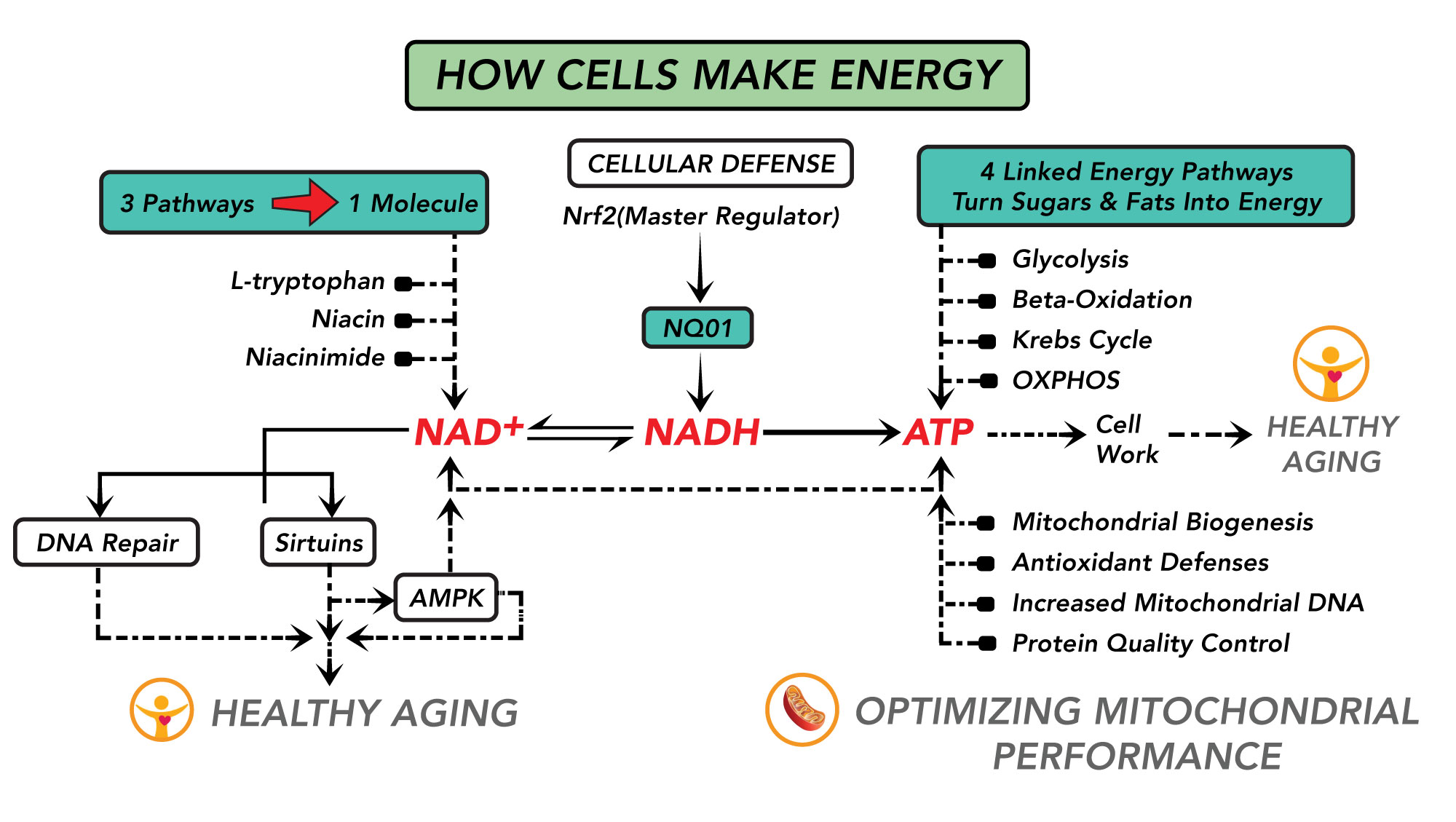
In metabolism, NAD facilitates redox reactions, carrying electrons from one reaction to another. This means that NAD is found in two-forms in the cell; NAD+ is an oxidizing agent that takes electrons from other molecules in order to become its reduced form, NADH. NADH can then become a reducing agent that donates the electrons it carries. The transfer of electrons is one of the main functions of NAD, though it also performs other cellular processes, including acting as a substrate for enzymes that add or remove chemical groups from proteins in post-translational modifications.
NAD + and NADH is the cell of a pair of REDOX, NADH is a reductive form of coenzyme NAD 1, NAD + is the oxide forms in REDOX reaction, NADH as hydrogen and electron donor, NAD + as a hydrogen and electron acceptor, involved in alcohol metabolism and other physiological respiration photosynthesis process them as in many REDOX reactions of coenzyme body to participate in the activities of life, and into each other. In the absence of oxygen, glucose metabolism produces very little ATP. Under aerobic conditions, NADH or FADH2 produced by glycolysis and the tricarboxylic acid cycle can produce a large amount of ATP by the oxidative phosphoric acid reaction.

Caution and Warnings:
1) If you are pregnant, nursing, taking any medications, or have any medical condition (such as gout or hypotension), consult your doctor before use.
2) If any adverse reaction occurs, immediately stop using this product and consult your doctor.
3) Stop use and consult a health care practitioner if you show signs of weakness, oral ulcers, or abdominal pain accompanied by severe muscle pain.
4) Store away from children. Store protected from light and moisture.
5) Do not use if the safety seal is damaged or missing.
| 무게 | 0.45 lbs |
|---|---|
| 크기 | 6.35 × 6.35 × 12.065 cm |
상품을 구매한 로그인 고객만 상품평을 남길 수 있습니다.
Related Products
-
Real • 내추럴 베이비 DHA•Vit D3•엽산 건강 에센셜 드롭
$34.99*새로운 공식 아이들은 튼튼한 뼈를 만들기 위해 비타민 D3가 필요합니다. 모유에는 미량의 비타민 D만 함유되어 있기 때문에 영유아가 식단에서 결핍하는 주요 비타민 중 하나인 경향이 있습니다. 이 비타민은 어린이가 강한 뼈를 형성하는 데 필수적입니다. 우리 몸은 칼슘을 흡수하기 위해 비타민 D가 필요합니다. 천연 비타민 D3 화합물은 완전한 구조이며 관련 생물학적 활성 효소 및 기타 미량 미네랄을 함유하고 있어 인체에 완전히…
-
Real • 독특한 포뮬러 지방 간 보호 캡슐
$45.99장기적으로 건강을 유지하려면 간을 적절히 치료해야 합니다. 북미 전역에서 비만이 증가하면서 모든 연령대에서 지방간 질환이 증가하고 있습니다. 잘못된 식단보다 간에 더 큰 영향을 미치는 것은 장기간의 알코올 남용입니다. 과도한 알코올 섭취는 간에 염증을 일으켜 지방간 질환을 유발할 수 있습니다. 하루에 한 잔만 마셔도 간에 장기적으로 부정적인 영향을 미칠 수 있습니다. 잘못된 식단과 운동 부족, 장기간의 알코올 및 담배 남용도 지방간…
-
Real • 컴파운드 슬리핑 슈신 바오
$46.99*멜라토닌 없음 바쁜 생활 방식, 스트레스 및 건강 상태는 좋지 않은 수면 습관에 영향을 미치고 때때로 밤잠을 방해할 수 있습니다. 미국에서는 만성 불면증으로 고통받는 약 10%를 포함하여 수백만 명의 미국인이 매일 밤 잠들기 위해 고군분투하고 있습니다. 이 후자의 상태는 잠들기 어렵고 잠을 잘 자지 못하고 아침에 너무 일찍 일어나는 것을 포함합니다. 약물 및 OTC 의약품과 같은 수면 유도제는 종종 의존…
-
아름다운 활력 (여성을위한 영양 성분 프로바이오틱스)
$37.99*이 상품은 현재 해외 고객에게만 제공됩니다. 밸런싱 & 여성화 캡슐 Real House여성 전체의 활력과 아름다움을 향상시키는 새롭고 독특한 포뮬러를 소개합니다. 200억 개의 생리 활성 프로바이오틱스와 미용 인자 주입 – 유기농 모링가 올리브와 30:1 유기농 농축 크랜베리가 여성의 사적인 부분의 건강을 자연적으로 보호하고 냄새를 제거하고 소화 및 면역 체계 기능을 강화하고 여성스러운 매력을 완전히 발산합니다!


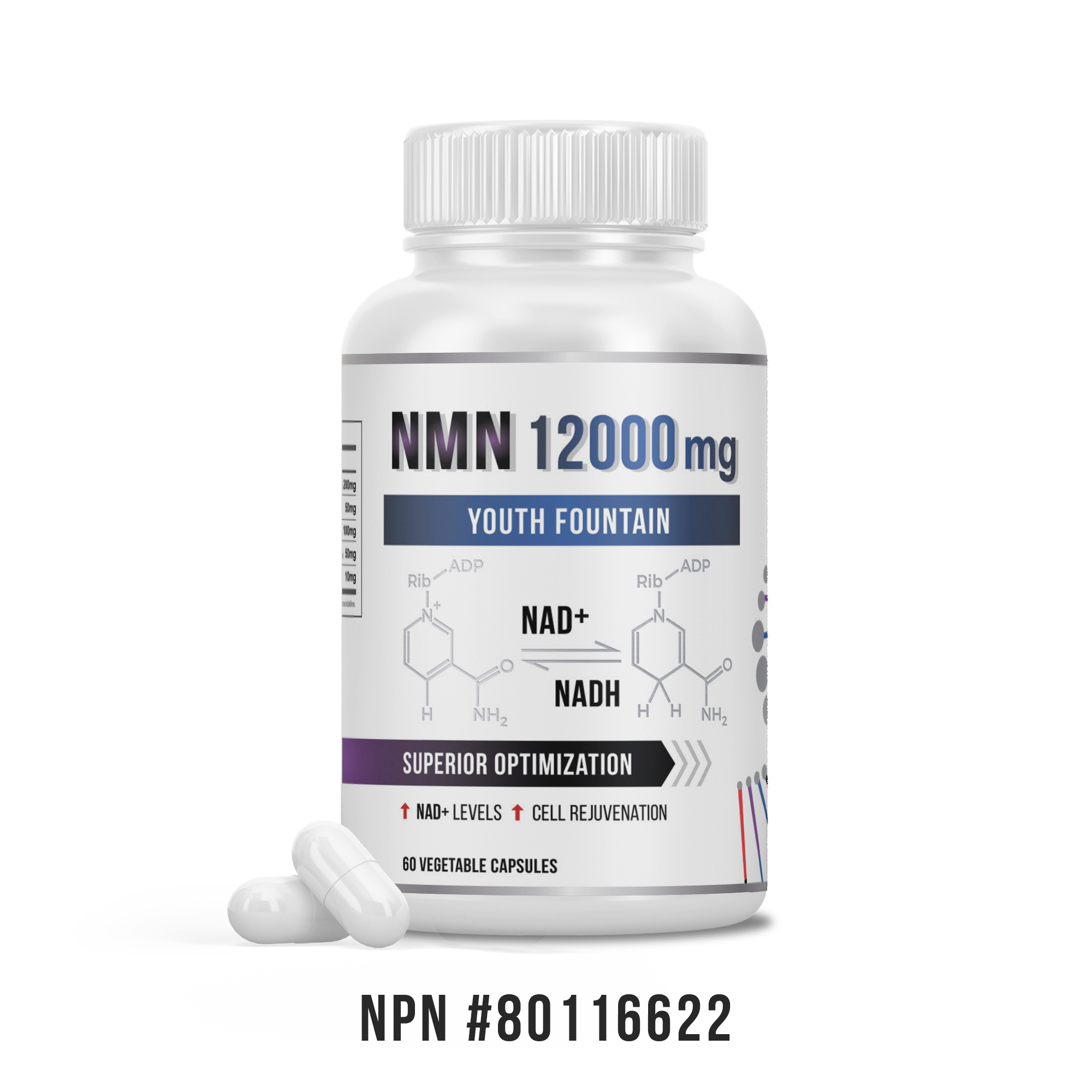
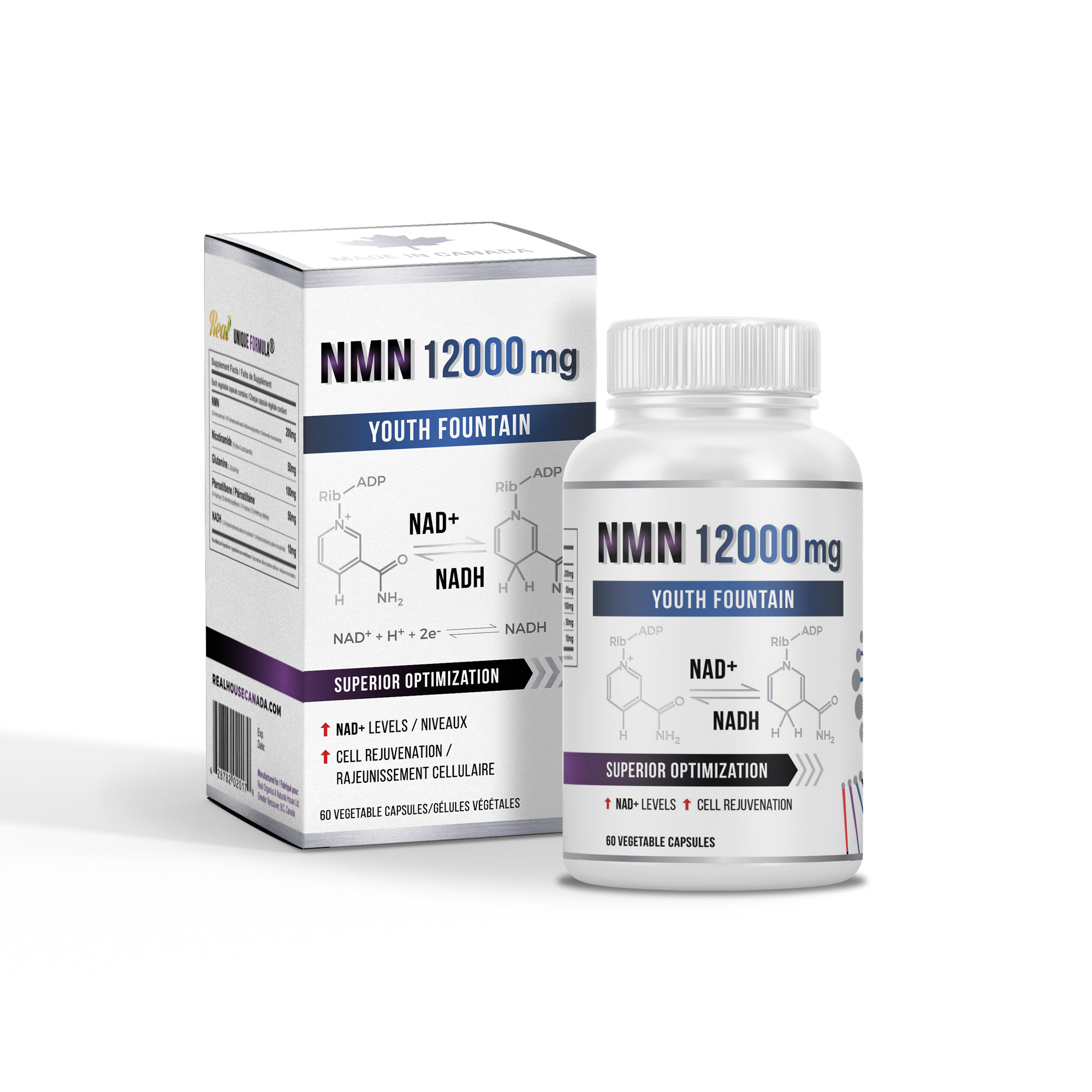
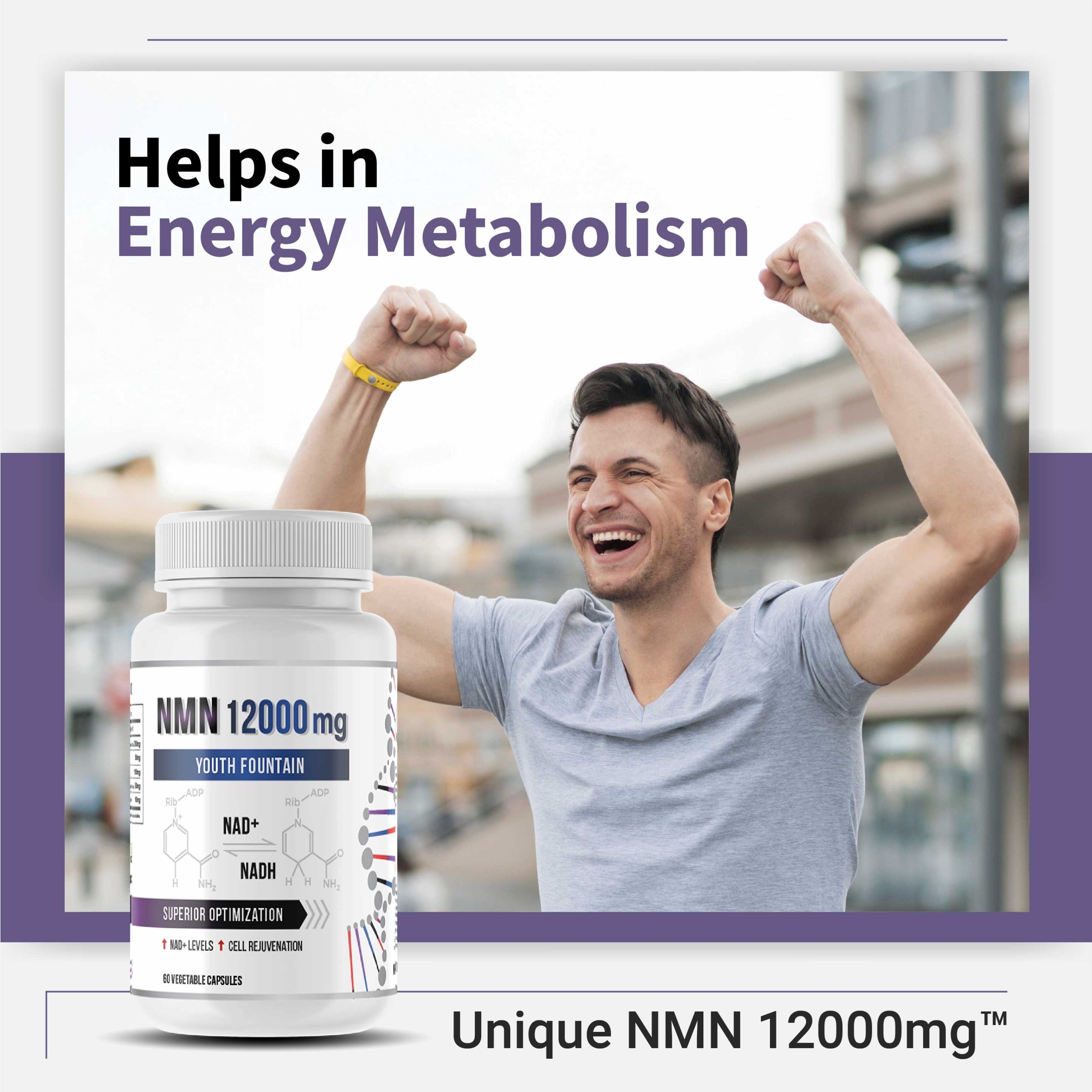
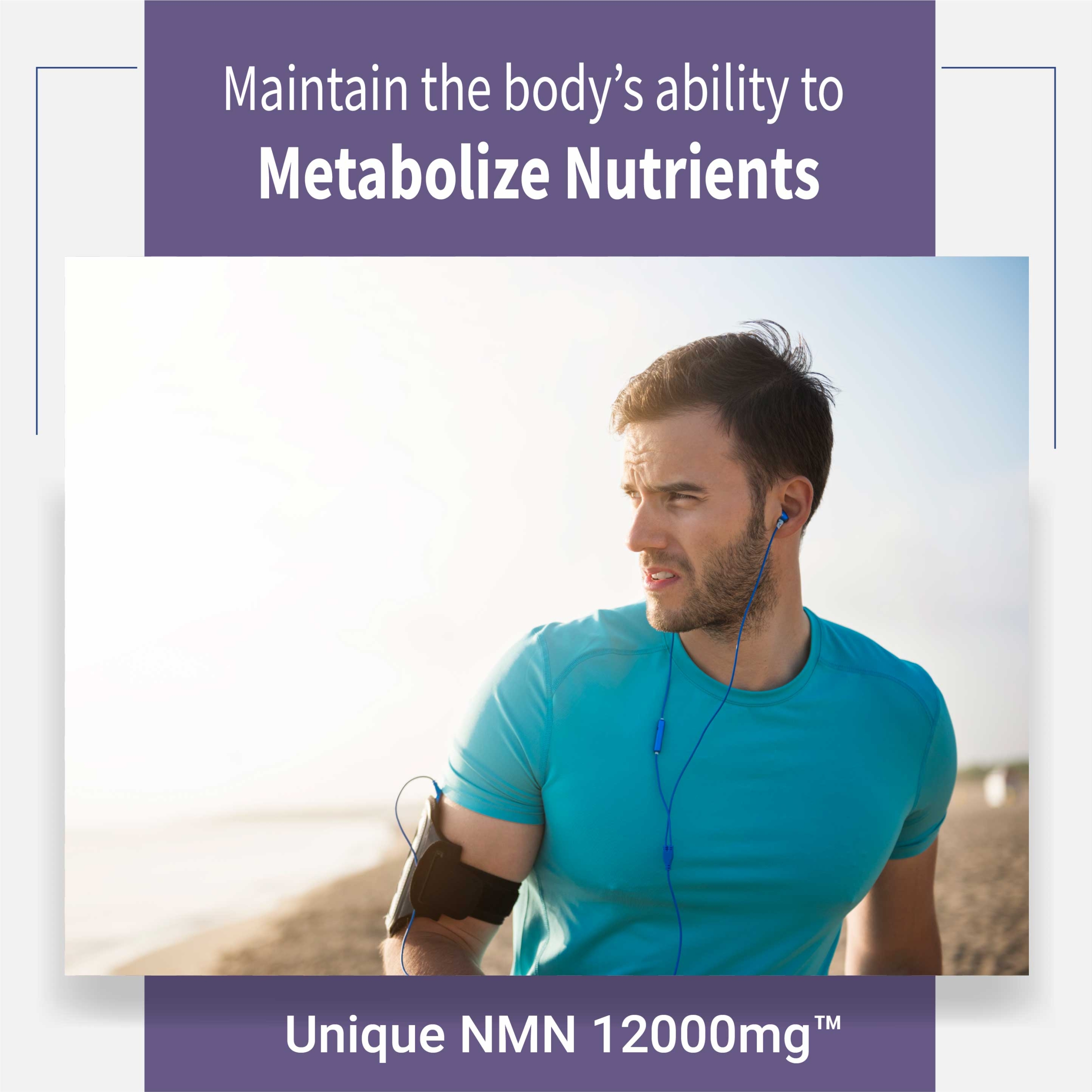
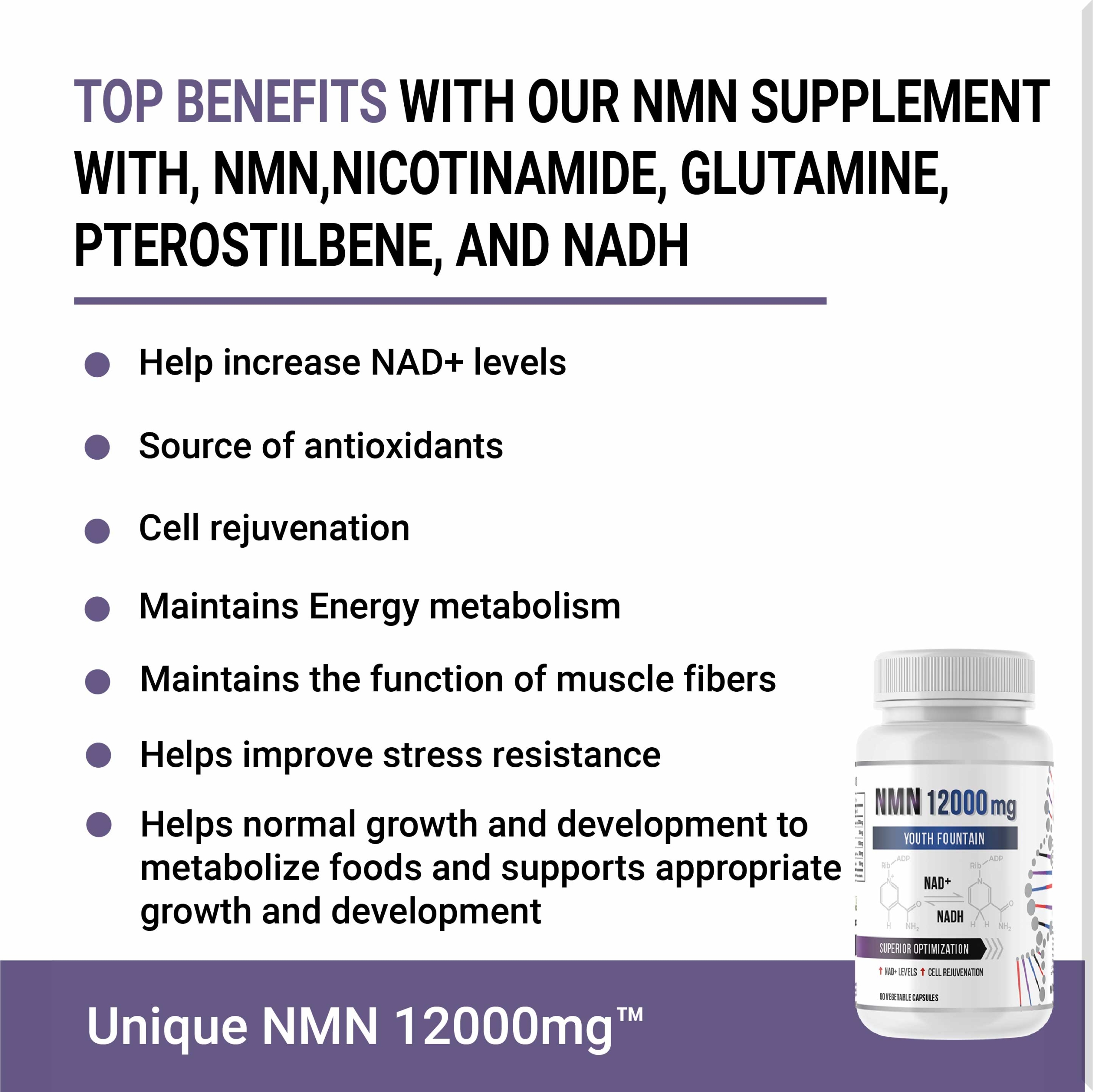

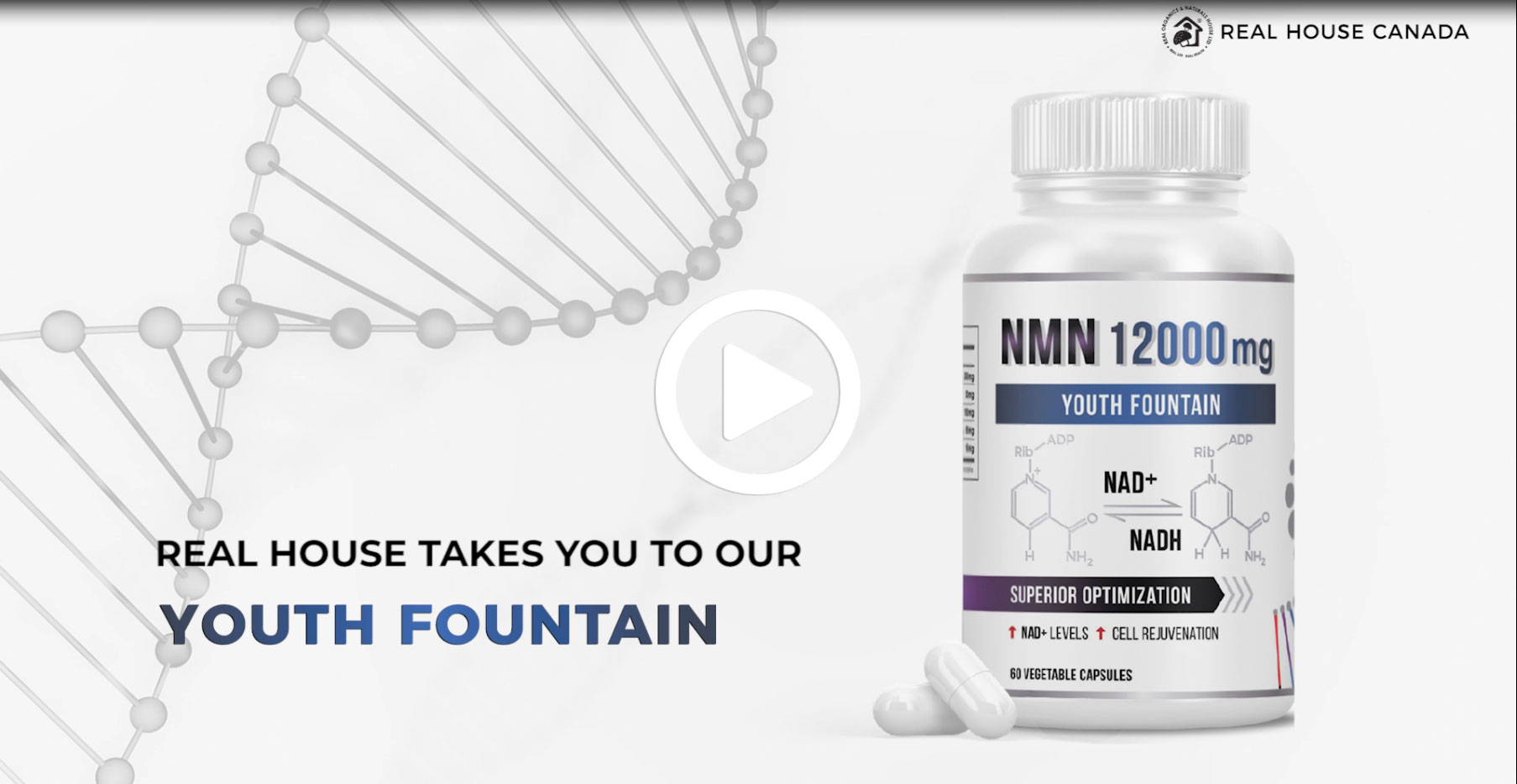

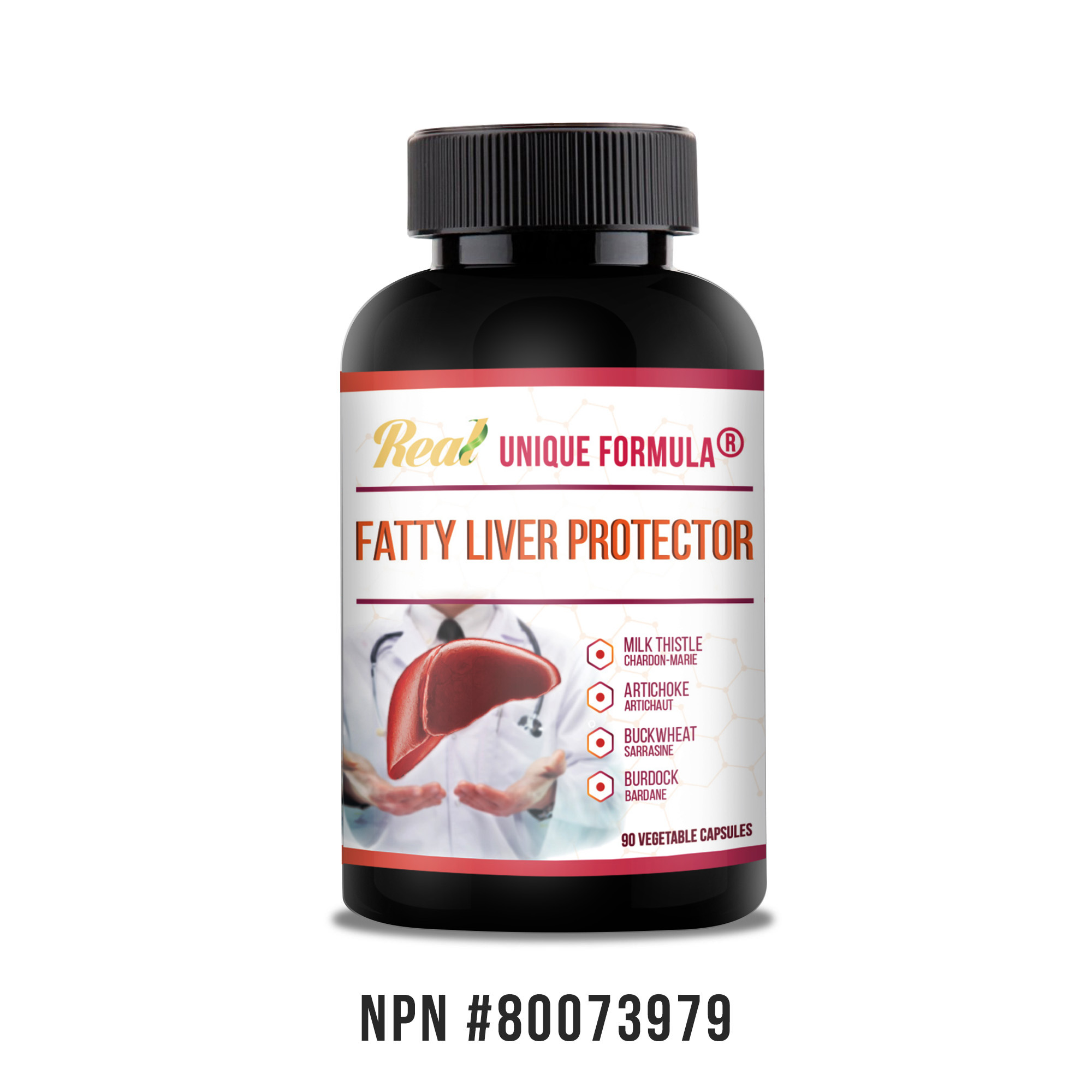
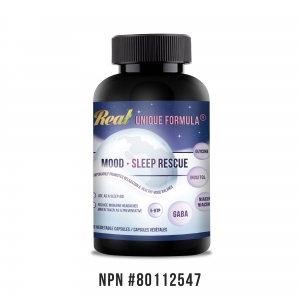
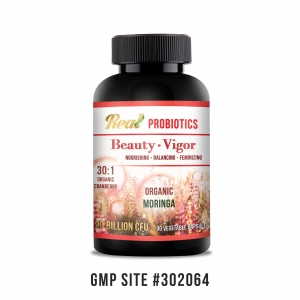




상품평
아직 상품평이 없습니다.